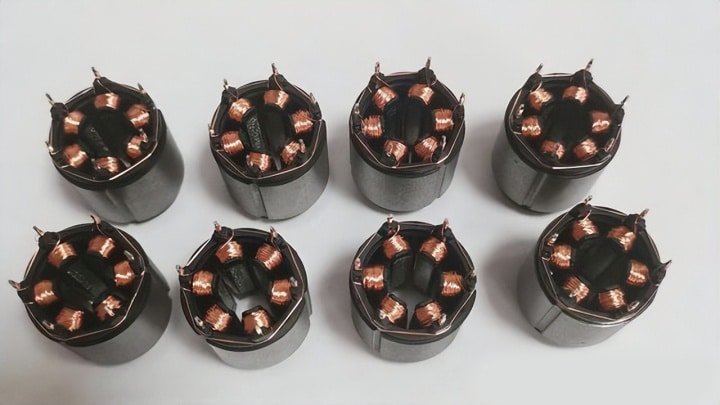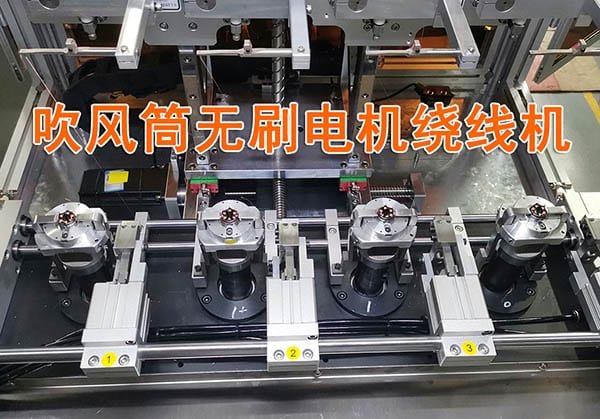The configuration of the high-speed stator inner winding machine is critical, especially the configuration of the servo motor and the tensioner. If it is not configured well, it will be difficult to meet the winding standard, and it will be more troublesome to modify it. So how to choose the servo motor and tensioner for the high-speed stator inner winding machine? What details should be paid attention to? Vacuz will introduce it to you!

Hair Dryer Stator
1. Selection of servo motor
1. Load characteristic analysis
Load torque : According to the load characteristics of the high-speed stator inner winding machine, calculate the torque of the required servo motor to ensure that the motor can meet the load requirements during acceleration and deceleration and stable operation.
Load inertia : Select a servo motor with matching inertia to improve control accuracy and response speed. It is usually recommended that the load inertia should be less than 5 times the motor inertia.
2. Control accuracy and speed requirements
According to the control accuracy and speed requirements of the winding process, select the appropriate servo motor model and specifications to ensure that the motor performance can meet production requirements.
3. Power supply and installation method
Select the corresponding servo motor according to the power supply type (AC or DC) of the equipment, and consider the installation method of the motor to ensure that it matches the space requirements of the equipment.
4. Brand and after-sales service
Select a servo motor of a well-known brand and reliable performance, and consider the manufacturer’s after-sales service and technical support capabilities to ensure the stability and durability of the equipment.
II. Selection of tensioner
1. Tension stability
Select a tensioner with stable tension to ensure that the tension of the wire remains consistent during the winding process to avoid loosening or breaking the wire.
2. Tension adjustment range
Select a suitable tension adjustment range according to the material, diameter and winding process requirements of the wire to meet the winding needs of different products.
3. Response speed
Select a tensioner with fast response speed to improve winding efficiency and maintain stable winding quality.
4. Compatibility and ease of use
Ensure that the tensioner is compatible with the control system of the servo motor and the winding machine, and select a tensioner that is easy to operate and maintain.
III. Precautions
1. Accurately measure load characteristics: Before selecting a servo motor and tensioner, accurately measure the torque, inertia and other characteristic parameters of the load.
2. Consider environmental factors: According to the working environment of the equipment, select servo motors and tensioners that can adapt to environmental factors such as temperature and humidity.
3. Reserve development space: Consider future development needs and choose products with scalability.
4. Comprehensively evaluate cost-effectiveness: Comprehensively consider product performance, price, brand, after-sales service and other factors, and choose products with high cost-effectiveness.

Hair Dryer Inner Stator Four Stations Automatic Needle Winding Machine
How to choose servo motors and tensioners for high-speed stator inner winding machines? What details should be paid attention to? Vacuz has made a simple explanation above, and I hope these little knowledge can help everyone!
E-naslov: sales@vacuz.com





